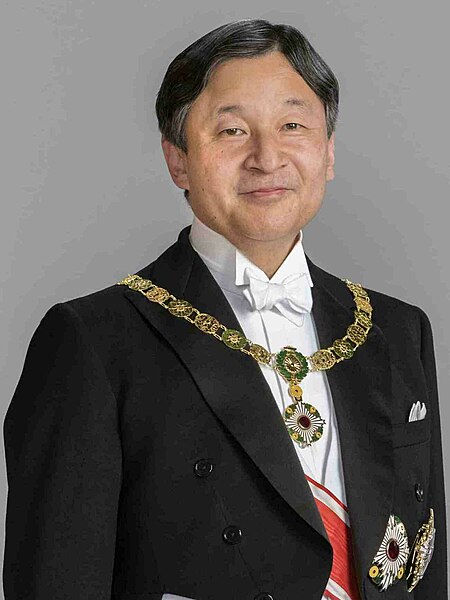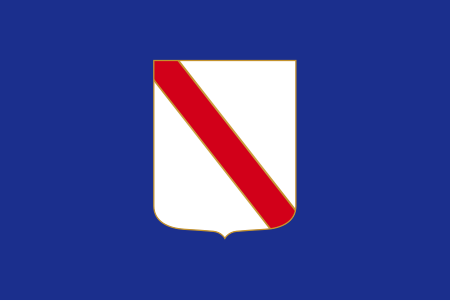Guthrum
| |||||||||||||||||||
Read other articles:

UK freedom to roam legislation United Kingdom legislationCountryside and Rights of Way ActAct of ParliamentParliament of United KingdomLong titleAn Act to make new provision for public access to the countryside; to amend the law relating to public rights of way; to enable traffic regulation orders to be made for the purpose of conserving an area’s natural beauty; to make provision with respect to the driving of mechanically propelled vehicles elsewhere than on roads; to amend the law relating …

Japanese newspaper The Sankei ShimbunTypeDaily newspaperFormatBlanket (54.6 cm x 40.65 cm)Owner(s)Sankei Shimbun Co., Ltd. (mostly owned by Fuji Media Holdings)PublisherTakamitsu KumasakaFoundedMarch 1, 1882 (as Jiji News); June 20, 1933 (as Nihon Kogyo Shimbun)Political alignmentConservative[1][2][3][4][5][6]Right-wing[7][8][9][10][11]LanguageJapaneseHeadquartersTokyoOsakaCirculationMorning edition…

この項目には、一部のコンピュータや閲覧ソフトで表示できない文字が含まれています(詳細)。 数字の大字(だいじ)は、漢数字の一種。通常用いる単純な字形の漢数字(小字)の代わりに同じ音の別の漢字を用いるものである。 概要 壱万円日本銀行券(「壱」が大字) 弐千円日本銀行券(「弐」が大字) 漢数字には「一」「二」「三」と続く小字と、「壱」「弐」…

У этого термина существуют и другие значения, см. Горностай (значения). Горностай Научная классификация Домен:ЭукариотыЦарство:ЖивотныеПодцарство:ЭуметазоиБез ранга:Двусторонне-симметричныеБез ранга:ВторичноротыеТип:ХордовыеПодтип:ПозвоночныеИнфратип:Челюстноротые�…

Overview of the philosophy of artificial intelligence See also: Ethics of artificial intelligence Part of a series onArtificial intelligence Major goals Artificial general intelligence Recursive self-improvement Planning Computer vision General game playing Knowledge reasoning Machine learning Natural language processing Robotics AI safety Approaches Symbolic Deep learning Bayesian networks Evolutionary algorithms Situated approach Hybrid intelligent systems Systems integration Applications Proj…

Defunct global distributor of American films Cinema International CorporationCompany typeJoint-ventureFounded1970; 54 years ago (1970)Defunct1981; 43 years ago (1981)FateMerged with United Artists International to form United International PicturesSuccessorUnited International PicturesProductsFilmOwnerParamount Pictures (50%)Universal Pictures (50%)[1]DivisionsCIC Video Cinema International Corporation (CIC) was a film distribution company started by P…

Klimov TV3-117 adalah mesin turbin gas aero Rusia. Mesin ini digunakan di sebagian besar pesawat angkat menengah, utilitas, dan helikopter serang yang dirancang oleh biro desain Mil dan Kamov. Mesin turboshaft TV3-117 dikembangkan pada tahun 1974. Kemudian Klimov TV3-117 telah terinstal pada 95% dari semua helikopter yang dirancang oleh Mil dan Pusat Rekayasa Kamov. Mesin tersebut diproduksi di banyak varian. Meskipun penunjukan yang sama, keluarga mesin TV7-117 semua baru dan tidak terkait deng…

لمعانٍ أخرى، طالع بردة (توضيح). هذه المقالة عن مرض البردة. لقصيدة البردة للبوصيري، طالع قصيدة البردة (البوصيري). الكالزيون عين مصابة بالبردة (كيس في الجفن)عين مصابة بالبردة (كيس في الجفن) معلومات عامة الاختصاص طب العيون من أنواع التهاب الجفن، ومرض الموقع ال�…

HMS Queen Elizabeth di Lemnos pada 24 April 1915 Tentang kelas Nama:Kelas Queen ElizabethOperator: Angkatan Laut Britania RayaDidahului oleh:Kapal tempur kelas-Iron DukeDigantikan oleh:Kapal tempur kelas-RevengeBertugas:1914–1947Rencana:6Selesai:5Batal:1Hilang:1 Ciri-ciri umum Kelas dan jenis Kapal tempurBerat benaman 27.500 ton (standard) 36.500 ton (muat penuh)Panjang 645 ft 9 in (196,82 m)Lebar 90 ft 6 in (27,58 m)Daya muat 30 ft 2 in (9,19&…

Israeli footballer This article is about Avi Cohen (footballer, born 1956). He is not to be confused with Avi Cohen (footballer, born 1962). Avi Cohenאבי כהן Cohen in 1990Personal informationFull name Avraham CohenDate of birth (1956-11-14)14 November 1956[1]Place of birth Cairo, EgyptDate of death 29 December 2010(2010-12-29) (aged 54)[2]Place of death Tel Aviv, IsraelPosition(s) DefenderYouth career1966–1974 Maccabi Tel AvivSenior career*Years Team Apps (Gls)1974�…

この項目では、日本における称号または地位としての天皇について説明しています。 在位中の天皇の呼称の概説については「今上天皇」をご覧ください。 2019年(令和元年)5月1日より在位中の天皇については「徳仁」をご覧ください。 歴代天皇については「天皇の一覧」をご覧ください。 その他の「天皇」については「天皇 (曖昧さ回避)」をご覧ください。 日本天皇 �…

This article may contain excessive or inappropriate references to self-published sources. Please help improve it by removing references to unreliable sources where they are used inappropriately. (January 2019) (Learn how and when to remove this message) Historical Demographics Altar of Domitius Ahenobarbus Articles Demographic history Historical demography World population estimates List of Countries by Population 1700 1800 1900 This is a list of countries by population in 1800. Estimate numbers…

ميناء سيدي كرير المكان البلد مصر المكان سيدي كرير، الإسكندرية التفاصيل دخول الخدمة 1977 (منذ 47 سنة) المشغل الشركة العربية لأنابيب البترول سوميد المالك الشركة العربية لأنابيب البترول سوميد النوع ميناء بترولي أرصفة الميناء 2 الإحصائيات تعديل مصدري - تعديل ميناء سيدي كري�…

Lars-Erik NelsonSyndicated columnist Lars-Erik Nelson.Born(1941-10-15)October 15, 1941Brooklyn, New York, USDiedNovember 20, 2000(2000-11-20) (aged 59)Bethesda, MarylandAlma materColumbia University (1963)Occupation(s)Journalist, political columnist, authorEmployerNew York Daily NewsAwardsMerriman Smith Memorial Award, 1980 Lars-Erik Nelson (October 15, 1941 – November 20, 2000) was an American journalist, political columnist and author best known for his syndicated column in the New…

Церковь Святой Ирины в Константинополе. 532 год, перестройка после 740 года Кресто́во-ку́польный храм (в литературе также встречается вариант написания «крестовокупольный») — архитектурный тип христианского храма, сформировавшийся в Византии и в странах христианского В…

Artikel ini sebatang kara, artinya tidak ada artikel lain yang memiliki pranala balik ke halaman ini.Bantulah menambah pranala ke artikel ini dari artikel yang berhubungan atau coba peralatan pencari pranala.Tag ini diberikan pada Oktober 2022. Kesatria iman adalah orang yang menempatkan iman bulat dalam diri sendiri dan dalam Allah dan dapat bertindak bebas dan independen dari duniawi. Filsuf Denmark abad ke-19 Søren Kierkegaard membahas kesatria iman dalam beberapa karya pseudonimnya, dengan …

Tennis aux Jeux olympiques d'été de 2024 Édition Olympic Tennis Event Date Du 27 juillet au 4 août 2024 Lieu stade Roland-Garros 48° 50′ 50″ N, 2° 14′ 57″ E Catégorie Jeux olympiques Surface Terre battue (extérieur) Tableaux de simple Dames 6 tours (64 joueuses) Messieurs 6 tours (64 joueurs) Tableaux de double Dames 5 tours (32 équipes) Messieurs 5 tours (32 équipes) Mixte 4 tours (16 équipes) Tennis aux Jeux olympiques Tokyo 2020 Los Angeles…

Casal VelinoKomuneComune di Casal VelinoLokasi Casal Velino di Provinsi SalernoNegaraItaliaWilayah CampaniaProvinsiSalerno (SA)Luas[1] • Total31,71 km2 (12,24 sq mi)Ketinggian[2]170 m (560 ft)Populasi (2016)[3] • Total4.938 • Kepadatan160/km2 (400/sq mi)Zona waktuUTC+1 (CET) • Musim panas (DST)UTC+2 (CEST)Kode pos84040-50Kode area telepon0974Situs webhttp://www.comune.casal-velino.sa.it Cas…

Artikel ini bukan mengenai Chai Wan Kok atau Wan Chai. Chai Wan Pemandangan Chai Wan, Siu Sai Wan dan Basin Penanganan Kargo Hanzi tradisional: 柴灣 Hanzi sederhana: 柴湾 Pinyin: Cháiwān Makna harfiah: teluk kayu bakar Alih aksara Mandarin - Hanyu Pinyin: Cháiwān Yue (Kantonis) - Romanisasi Yale: Chàaihwāan Chai Wan (/ˌtʃaɪ ˈwɑːn/; Hanzi: 柴灣), sebelumnya bernama Sai Wan (西灣),[butuh rujukan] terletak di ujung timur dari area perkotaan Pulau Hong Kong di samping…

This file is an archive - please do not add new discussion here - add it to my Talk page Archived to October 31 Stubstuff Eritrea people stubs Apparently, someone created Eritrean people stubs without any discussion that I can remember. However, they currently only have 25 and I doubt they will pass the threshold anytime soon. I don't really know the procedure for deleting/upmerging it, so I am passing the buck to you. Thanks.--Thomas.macmillan 13:18, 1 September 2006 (UTC)[reply] Tibet-geo-stub…



